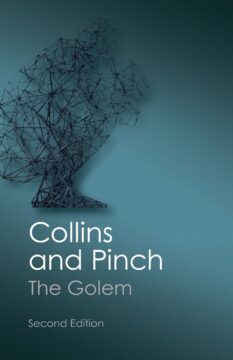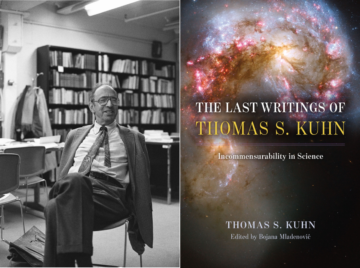by David Kordahl

On Tuesday and Wednesday of last week, I taught introductory physics students how to set up circuits. They struggled. They tried to connect capacitors one to the next but, upon hooking up the battery, would find that none had charged. Or, if some capacitors had charged, others would have voltages unaccountably higher than theory would imply. Students would call me over. I would run them through my standard jokes. “Did you have faith? Did you direct your psychic energy toward the circuit?” They would roll their eyes, and I would show them how to fix it. I have taught introductory physics many times, and I know the usual ways that laboratory exercises can fail. Students often find it frustrating when I am able to come to their lab stations and get setups to work that they had concluded were fundamentally broken.
Sociologists of science have long been interested in the tacit knowledge that introductory labs are intended to convey. In the controversial final pages of The Golem: What You Should Know about Science (1993), the British sociologists Harry Collins and Trevor Pinch compare all of science to a messy introductory lab. Each student measures a different temperature of boiling water. But even after that, the teacher is able to convince the students that water boils at exactly 100º C. “That ten minutes renegotiation of what happened is the important thing,” they insist. “If only, now and again, teachers and their classes would pause to reflect on that ten minutes they could learn most of what there is to know about the sociology of science.”
During the past few weeks, I’ve been revisiting The Golem and its two sequels, The Golem at Large: What You Should Know about Technology (1998), and Dr. Golem: How to Think about Medicine (2005), all co-authored by Collins, who today is at Cardiff University in Wales, and Pinch, who died in 2021. These books are entirely composed of case studies, and range from discussions of cold fusion, to macroeconomic predictions, to double-blind medical trials.
Collins and Pinch were early disciples of Thomas Kuhn, whose idea of “incommensurability” I discussed at length in an earlier column. Their first book together, Frames of Meaning: The Social Construction of Extraordinary Science, attempted to apply Kuhnian lessons to scientists studying parapsychology. That topic was self-consciously controversial, but in The Golem they turned to standard science, aiming to show non-specialists how the sausage is made.
The “golem” metaphor, here, stands for science itself—a clumsy and sometimes dangerous creature, animated by the word “truth” in its mouth. Read more »

